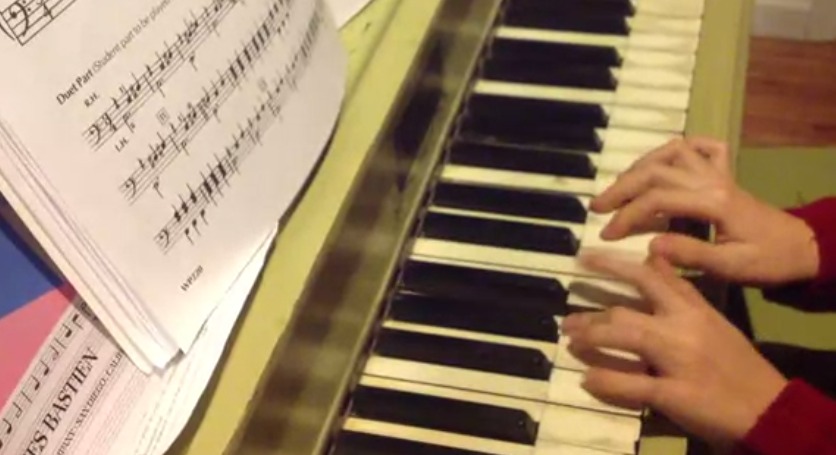Read and write music notation
Learn to read and write basic music notation by identifying notes and rhythms, then compose and notate a short melody on staff paper.



Step-by-step guide to read and write basic music notation
Can Kids Really Learn Piano Online?
Step 1
Gather your materials and sit at a clear workspace with your staff paper and pencil.
Step 2
Draw one five‑line staff on your paper and add a treble clef at the left end.
Step 3
Write the line note names E G B D F on the five lines from bottom to top.
Step 4
Write the space note names F A C E in the four spaces from bottom to top.
Step 5
Draw a whole note (an open circle) on the staff on any line or space.
Step 6
Draw a half note (open circle with a stem) on the staff on a different line or space.
Step 7
Draw a quarter note (filled circle with a stem) on the staff.
Step 8
Draw an eighth note (filled circle with a stem and one flag) on the staff.
Step 9
Set your metronome or timer to 60 beats per minute so each click is one beat.
Step 10
For each note type you drew, clap and count its beats to the metronome so you can hear the rhythm.
Step 11
Write a short 4‑measure melody on the staff using notes and rhythms you learned where each measure has four beats.
Step 12
Play your written melody on the keyboard while reading the staff to hear how it sounds.
Step 13
Erase and redraw any notes that sound or look wrong until the melody is the way you like it.
Step 14
Share a photo or scan of your finished notated melody on DIY.org.
Final steps
You're almost there! Complete all the steps, bring your creation to life, post it, and conquer the challenge!


Help!?
What can we use if we don't have staff paper, a metronome, or a keyboard?
If you don't have staff paper, draw five evenly spaced lines with your pencil or print a free staff template, and replace a metronome and keyboard with a free metronome app (set to 60 BPM) and a virtual keyboard app or simple xylophone.
My clapping and playing don't match the beats or the notes look wrong — what should I try next?
If clapping doesn't match the metronome or the melody sounds wrong on the keyboard, slow the tempo to about 40 BPM, count out loud for each note value as you clap (whole=4, half=2, quarter=1, eighth=½), then erase and redraw any notes that are misplaced before replaying.
How can I adapt this activity for different ages or skill levels?
For younger children, simplify 'Write a short 4‑measure melody' to two measures using only quarter and half notes and use colored stickers on the staff paper, while older kids can add key signatures, rests, eighth-note rhythms, and increase the metronome tempo when playing on the keyboard.
How can we extend or personalize the basic 4‑measure melody activity?
Enhance your 4‑measure melody by color-coding whole, half, quarter, and eighth notes on the staff paper, adding dynamics or a second keyboard part to make a duet, recording the performance, and then upload the photo or audio with the notated score to DIY.org.
Watch videos on how to read and write basic music notation
Musical Notation - Educational Videos about Music for kids
Facts about music theory for kids
✍️ Many musical directions (tempo and dynamics) are written in Italian — like allegro (fast) and forte (loud).
🎓 Guido of Arezzo (medieval music theorist) developed early staff and solfège ideas that led to modern notation.
🕒 The 4/4 time signature is nicknamed "common time" and is the most frequently used meter in Western music.
🎼 The Hurrian Hymn No. 6 (around 1400 BCE) is the oldest surviving written melody we know of!
🎯 The treble clef is also called the G clef because its curl circles the G line on the staff.
How do I teach my child to read and write basic music notation and compose a short melody?
What materials do I need to help my child learn music notation and compose melodies?
What ages is reading and writing basic music notation suitable for?
What are the benefits, safety tips, and variations for teaching music notation to kids?


One subscription, many ways to play and learn.
Only $6.99 after trial. No credit card required



